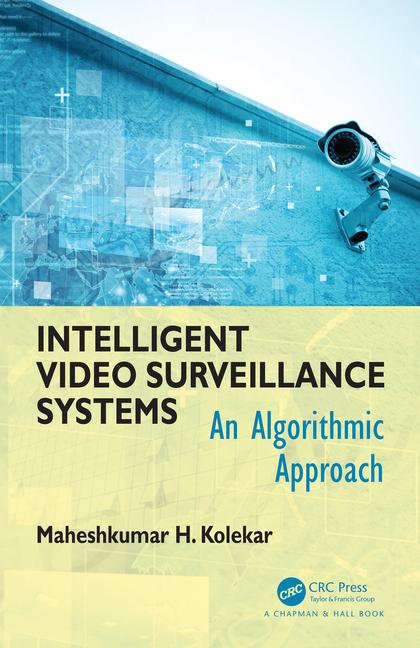Think Hybrid and Save Money: How to Maximize Your Existing Video Surveillance Assets

The rate at which many technologies are evolving is astounding. Just think what today’s smartphone can do, how email and the Internet have changed our work lives, or how the fax machine — though useful — is now considered outdated. This rapid evolution brings us many new opportunities; it also raises the challenge of what to do with systems, technology and equipment that are still functional, but no longer as effective. Security and surveillance markets in particular are affected by these exponential advancements.
With the post-9/11 demand for increased security everywhere, organizations find themselves struggling to keep up with the latest technology. Many have made substantial investments in their security systems over recent years, creating an extensive and functional infrastructure. For this reason, and in light of today’s budget constraints, many find that forklift system upgrades are simply impossible; even though new technologies not only provide more security, they also create efficiencies that substantially reduce overall costs.
While organizations feel both a business and moral imperative to provide the securest environments possible, due to the challenging financial climate, the deployment of new, more effective technologies can be complicated. One way to address this conundrum is to develop technology-based solutions that leverage both existing infrastructure and the latest advancements – in short, hybrid solutions that offer the best of both worlds.
From CCTV to IP Video
Over the past two decades, hundreds of millions of CCTV cameras and video management systems have been deployed worldwide. Video-based surveillance and security systems are considered highly effective for almost any-sized environment, from small retail outlets to municipal centers. These systems used to be mainly passive, requiring continuous monitoring, but the rapid adoption of IP networks has morphed video surveillance solutions into highly automated, proactive solutions.
The transition from passive analog systems to network-based intelligent video solutions means security operations can identify and respond to unfolding events with greater speed and efficiency. It has also enabled the rapid distribution of video data across organizations and to external agencies. Furthermore, with the added functionality and intelligent capabilities of network-based intelligent video solutions, the extraction of valuable operational insights — beyond security and safety — is now possible.
With analog cameras having an average lifespan of 10 to 20 years, it’s estimated that there are approximately 200M fully functioning analog cameras in use worldwide. Up until now, most organizations with existing analog cameras that wanted to take advantage of the latest technology faced a clear dilemma: whether or not to invest in an expensive forklift upgrade. Now, however, there’s another alternative. You can keep your analog cameras and get the benefits of today’s advancements by employing a hybrid video management system that includes centralized smart video technology.
Maximize existing analog assets
Advancements in IP network technology have substantially changed the functionality of video-based surveillance systems. Automated features that address a range of critical tasks from maintenance to alerting to potential threats have made today’s IP-based systems much more efficient and effective. For example, video quality is of critical importance to any video system. Having the ability to automatically enhance and ensure video quality from a central location results in operational expenditure savings as it eliminates the need for manual, time-consuming camera adjustments and labor-intensive monitoring processes. Furthermore, since all features are enabled from the system’s center using what’s known as a Smart Video Recorder (SVR), the type of cameras deployed—analog or IP—is irrelevant. Noted below are some of the features an SVR can add to a surveillance infrastructure that includes analog cameras.
Visual Parameter Optimizer
A Visual Parameters Optimizer enhances video quality and reduces maintenance costs by using a repetitive algorithm cycle to analyze the image quality coming from the video camera. It then automatically adjusts the camera’s visual parameters — balance, contrast, etc. — according to the analysis. This automated process enables continuous, high-quality viewing and recording, while saving labor costs that would otherwise be incurred by time-consuming, manual camera adjustments.
Camera tampering detection
Camera tampering can seriously impede video capture and incident investigations. But manual inspection of large-scale video networks to detect tampering can be cost prohibitive and time consuming. Camera tampering detection triggers an alert whenever video image integrity is compromised. It can automatically detect changes such as camera redirection, significant and sudden change in scene brightness, or focus change, ensuring proper video capture.
Advanced Video Motion Detection
Detecting movement in a specific scene, Advanced Video Motion Detection allows operators to select areas of interest and set sensitivity levels for alarms. In most systems, the motion detector will trigger a recording start and stop, thus reducing unnecessary recordings and the amount of storage used — directly affecting capital expenditure.
Video Analytics
Video analyticssupport the extraction of security and operational insights that can be gleaned from video. When implemented centrally, they allow operators to scale the wisdom to all edge devices, whether IP or analog. With the ability to convert passive systems into proactive ones, video analytics not only significantly improves the value of older equipment, but can also provide organizations with valuable operational information such as crowd congestion alerts and people counting capabilities.
Leveraging today’s advancements cost effectively
In summary, deploying a Smart Video Recorder can bring all the benefits of IP video networks to existing analog infrastructures, without the need for expensive forklift camera upgrades. Hybrid SVRs can help you get more out of your existing analog CCTV investment in two ways. First, by extending its functional life until you’re ready to migrate fully to an IP-based solution. And second, by breathing new life into your analog camera technology to enhance its performance while saving you money.
Looking for a reprint of this article?
From high-res PDFs to custom plaques, order your copy today!




.jpg?height=200&t=1706890249&width=200)



